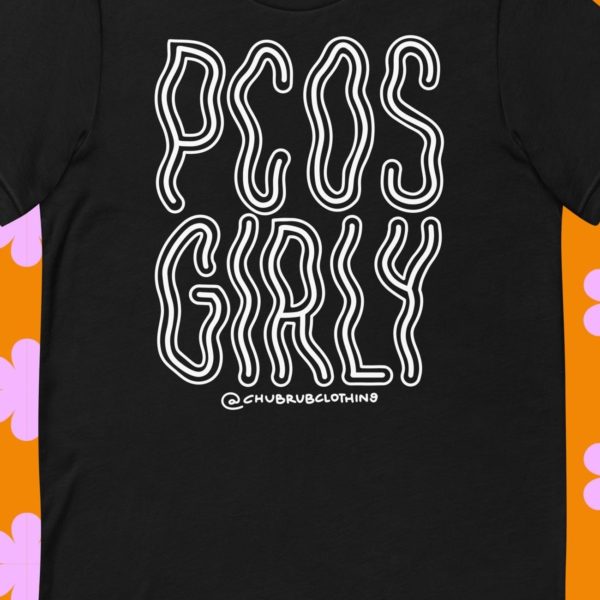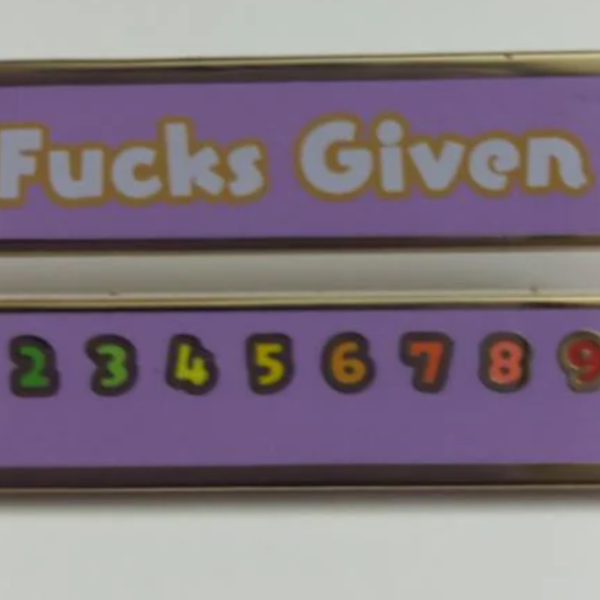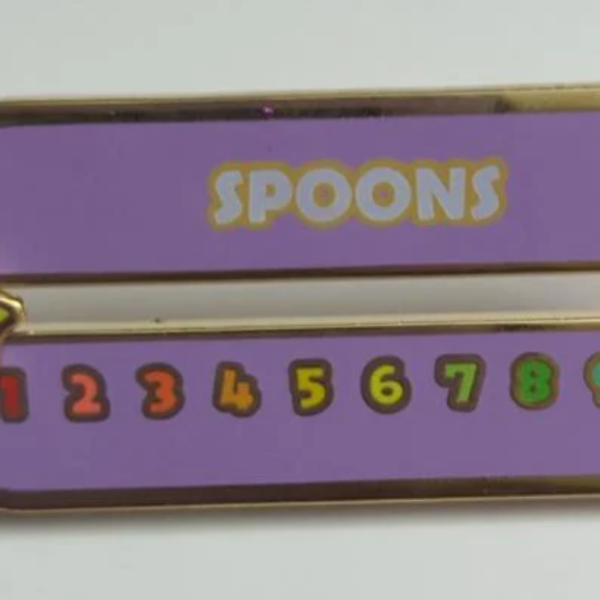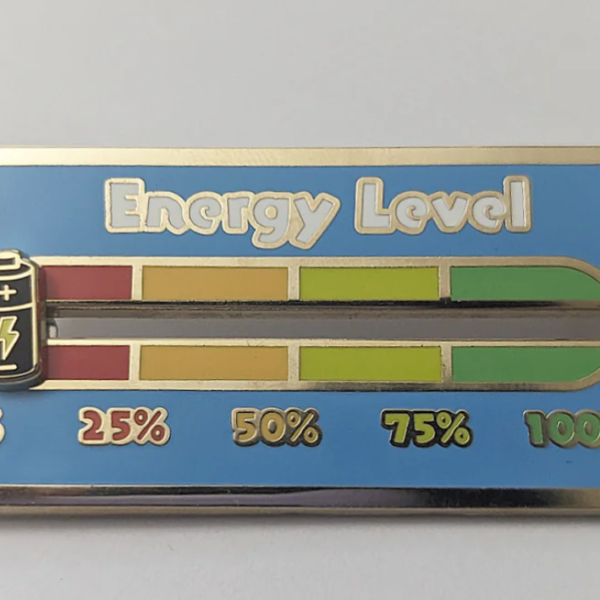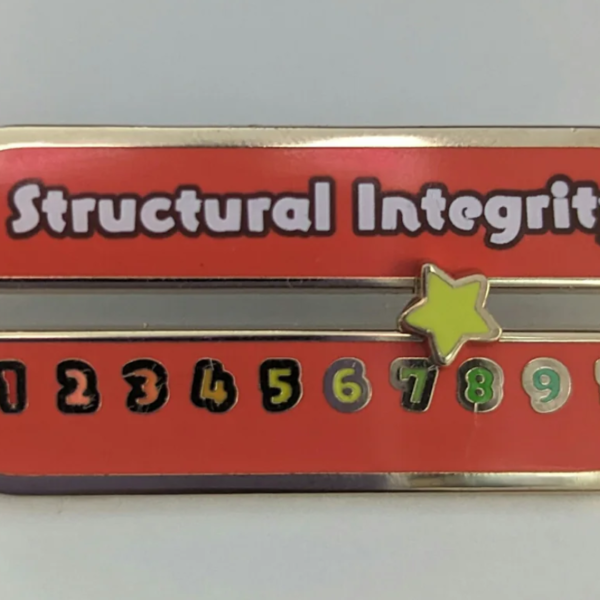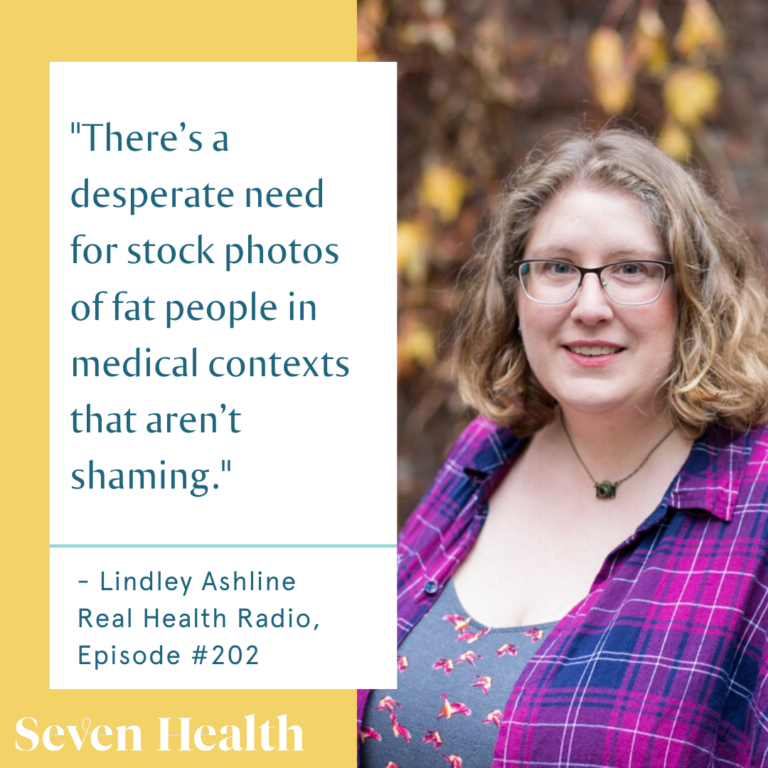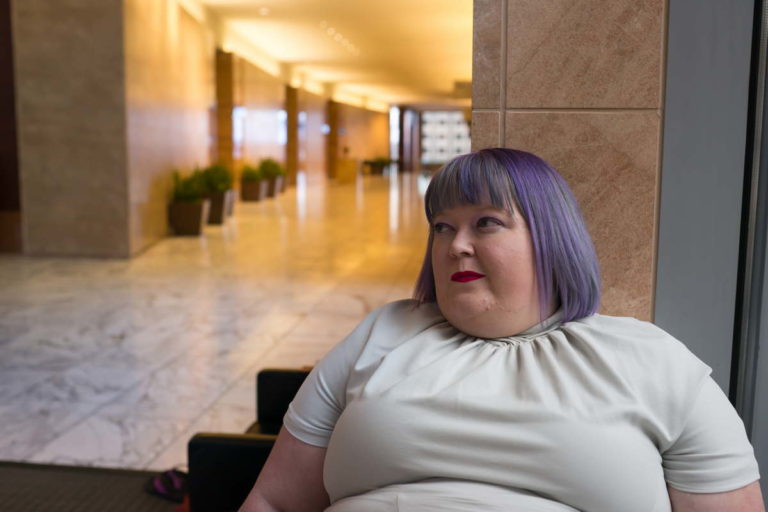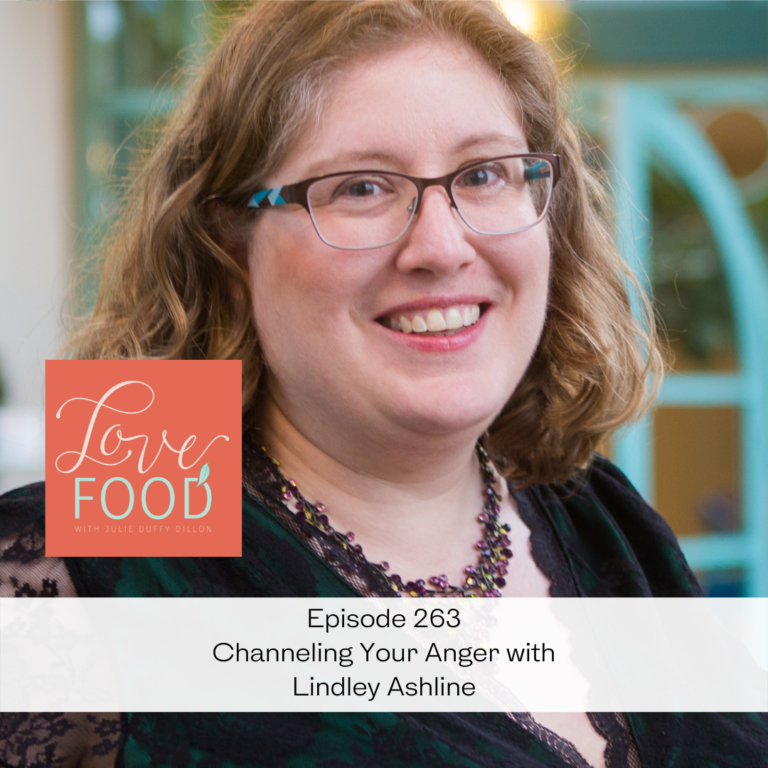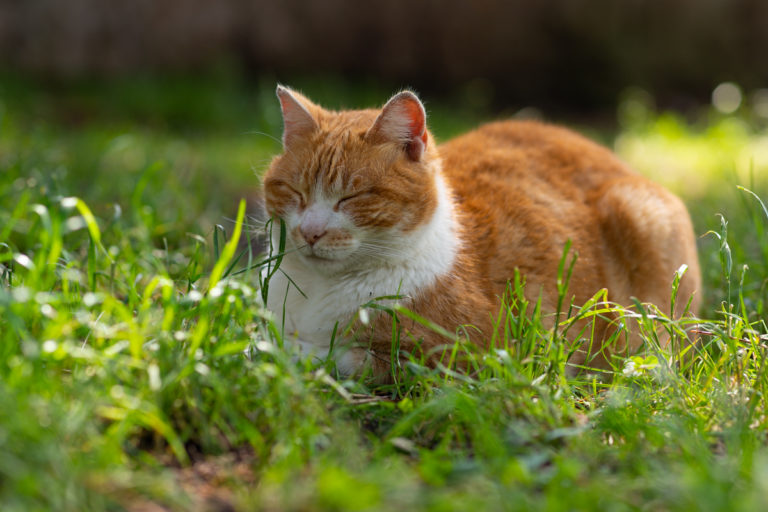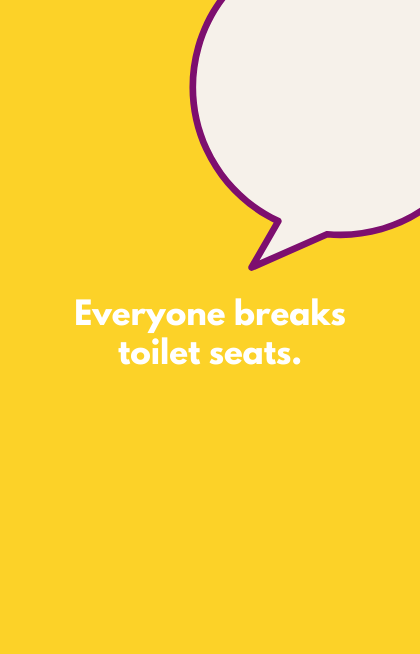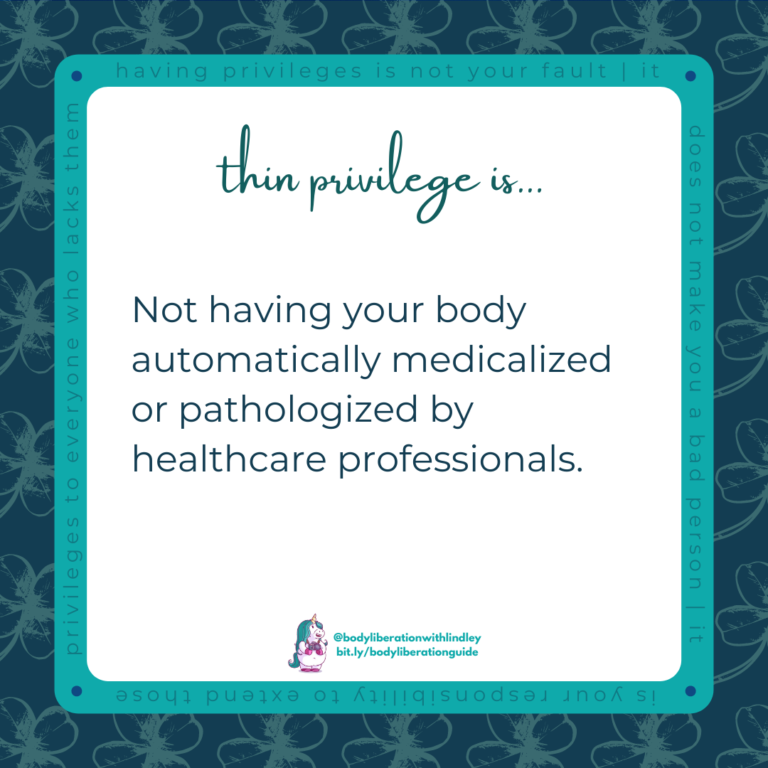LISTEN: Lindley on the Escape Diet Prison Podcast (with Transcript)
When I started my photography business in 2015, I had never seen or met another fat photographer. I wasn’t sure if it was even possible. (Because what we see around us tells us what is possible for people like us.) Now, of course, I know many fat photographers, both because I’ve deliberately sought out other people in underrepresented bodies, and because we fat folks are paving the way in our industries — but it was pretty intimidating not even knowing whether anyone would be willing to work with a photographer who was fat.
In my episode of Escape Diet Prison with Anne-Sophie Reinhardt, we look at this dynamic in detail, plus:
- what is was like to grow up without a TV and how that influenced my body image
- reclaiming the word fat for myself
- being an average size kid and how my body changed during puberty
- the time I went through the typical weight cycling that results from dieting
- fat bodies, fashion and hiding your femininity
- the urban myth of knowing someone who’s lost SO much weight and kept it off
- my struggle with rejecting healthism and knowing that no body is “bad” because it doesn’t meet our culture’s standards of health
- why it was such a big deal for me to learn about the social determinants of health
- the fear of not finding anybody willing and wanting to work with a fat photographer
“You don’t have to be beautiful. You can just show up.”
- how conforming with beauty standards can (still) make or break your career
- why she’ll never photoshop her models fat rolls away
“Having the stories that are in your skin exposed to a camera is as intimate as telling your story.”
- what we can learn from nature about our bodies and our roles on this planet
- the fact that just because we only value one body typ, it doesn’t mean that there won’t be any other body types out there anymore
- and so much more!
Transcript:
Anne-Sophie: This episode of the Escape Diet Prison Podcast is sponsored by the 365 Journaling Prompts for More Body-Confidence, Self-Love and Happiness. And who doesn’t want that?
If you’ve been wanting to start a solid journaling practice, but have no idea how to begin, if you’ve been hearing all about the magic of writing, which is super true, but you are scared of actually sitting down and allowing yourself to release your true self, if you have been journaling for a while, but you feel uninspired or lacking in motivation… I get it.
Journaling can seem daunting. And it can feel like it’s a huge challenge to start a solid journaling practice. But it doesn’t have to be.
That is why I’ve created the 365 Journaling Prompts for More Body-Confidence, Self-Love and Happiness.
You can join me for a whole year of journaling, a year of inspiration, a year of writing, a year of gaining clarity, regaining body respect, and allowing the magic that journaling is to transform your life from the inside out.
Go over to AnneSophie.us/365-journaling-prompts to sign up for the 365 Journaling Prompts.
And now, here’s the show.
Anne-Sophie: Hey, everyone. And welcome back to a brand new episode of the Escape Diet Prison Podcast. My name is Anne-Sophie Reinhardt. And this podcast is for all of you women out there who are ready to stop battling food and your bodies, and who want to embrace your own fierce, sexy, energetic selves in order to live the lives that you have always wanted to live. I hope you’re doing fabulous!
In this episode of The Escape Diet Prison Podcast, I am joined by Lindley Ashline. Lindley creates artwork that celebrates the unique beauty of bodies that fall outside conventional beauty standards.
Lindley is also the creator of Body Liberation Stock and the Body Love Box, a monthly body acceptance subscription box.
She lives outside Seattle with her husband and two feline overlords.
We talk about so many great things in this episode. Lindley is just amazing. Some of the things we mention and go really deep into is what it was like for her to grow up without a TV and how that influenced her body image, being an average-sized kid, and how her body changed during puberty, and what that meant for her life, for her body image and relationship with food.
We talk about fat bodies, fashion, and hiding your femininity. We talk about her struggle with rejecting healthism and realizing and really knowing that nobody is bad because it doesn’t meet our culture standards of health—which are super limited, as you know. We talk about why it was such a big deal for her to read about the social determinants of health and how that changed her view of her own body, the fear of not finding clients, customers, models who were and are willing and wanting to work with a fat photographer, what we can learn from nature about our bodies, and the fact that just because we only value one body type, it doesn’t mean that there won’t be and that there are not any other body types out there… and of course, so much more!
I’m really excited to share this episode with you. So without further ado, here’s our conversation. Enjoy!
Anne-Sophie: Thank you so much for being on the show today. I’m really excited and I’m really looking forward to talking with you today.
Lindley Ashline: Thanks! I’m so glad to be here.
Anne-Sophie: Can you tell us a little bit about your own relationship with food and your body and how that relationship evolved over your life and impacted your life overall?
Lindley Ashline: I think there are, as far as Lindley’s life, goes, I think there have been two really big factors that have affected my relationship with food, my relationship with my body. And there has sort of been these three lines that had affected everything.
One is that I grew up with very little access to TV and pop culture. And that has been both a blessing and a curse. It means that I missed the ‘80s and ‘90s as far as pop culture goes. So when people make pop culture references, I never get it. People had to stop and explain things. And sometimes that can feel a little bit isolating.
But it’s been a big blessing as well because I didn’t absorb a lot of diet culture growing up either.
And that has been, in my adult life, as I have been living in a body that I identify as fat—I use the word fat as a neutral descriptor because I have reclaimed that word. I’m not insulting myself when I call myself fat. But as I experienced the world in a fat body, I don’t have as many I call them “fish hooks” to pull out of my skin that are these diet culture messages—as in that you should be dieting all the time, all the things that we absorb from pop culture. I just didn’t have as many of those to start with.
And so, it has made my journey relatively easy.
And I’m not going to name the person because I didn’t ask them for permission, but I have a local friend who is about ten years older than I am—I’ll be 40 this year—and she has been active in the body acceptance, body positive, fat acceptance communities for many, many years. And she still really struggles with the desire to have weight loss surgery—not because she really truly wants it, but because it’s presented as this thing that you should be pursuing.
And so, every time she sees a commercial for that, or every time she reads about that, there is that pressure all over again because she was raised where she had a close relative who had the surgery and who had massive complications from it. She was exposed to that a lot very early on.
New at Body Liberation Stock
And so, not being exposed to that was actually really helpful for me because it means that my journey has been relatively easy.
The other big factor is that I was an average-sized kid. I wasn’t at all the fat child.
I had a stay-at-home mom who was very invested in cooking for us. And cooking for that place and time where these wonderful, high quality, home-made meals. And so, because I had constant supervision in what I was taking in—
I mean, I was eating an average diet in the sense of what you put into your body. But I was not put on weight loss diets as a child. I was not lectured about my intake as a child. Again, I was not exposed to that partly because I was an average-sized child.
Now, once I hit puberty, my body did genetically what every single other body in my family does. At puberty, we evolved into fat women with big child-bearing hips and big breasts. And we’re just this fat European peasant women. That’s what our bodies do.
And so, again, not having that exposure to diet messaging as a child, both for those reasons, both of those factors, it meant that when my body did become a fat body that—
Of course, I struggled with that. I had a very hard time with that as a teenager, as a young adult. But I didn’t have the scope of issues with my body that I might have had I been watching diet commercials since I was two.
Anne-Sophie: That’s so interesting. I find that fascinating because I was almost going to say, “Well, your body evolved into something that bodies are not supposed to evolve into.” We’re supposed to be pre-pubescent girls all of our lives as women. And so that you didn’t see your body that way when it changed is pretty amazing. And that is a very unique perspective, I think.
Lindley Ashline: And that’s not to say that I did not have body image struggles because of course I did. Even if you grow up in—and my perspective is very US-centric because that is where I’ve always lived. But if you grew up in an American culture, you’re going to absorb some of it.
I fully understood that when I developed hips that that was a bad thing. I fully understood that when I was a US size 18 looking for a prom dress, that in that time and place, that wasn’t really a thing. And so, we would go prom dress shopping, and the lady at the store would be trying to shove me into a size 10, and clucking distressfully over my bad hips that wouldn’t let me fit into that dress.
I was absorbing plenty of these messages, just not as many as I might have otherwise.
Anne-Sophie: So, how did you deal with that, knowing that “Okay, I was an average-sized kid, and now everything is growing, it’s getting bigger”?
And whatwas the outside saying to you? Also, I’m curious about that because you said what women in your family do, or what their bodies do, at this point. How was that relationship? How was that connection?
Lindley Ashline: Well, it’s such a fascinating thing because when we look at the media, what we see is uniformly very, very thin bodies meets specific aesthetic standards. But then when we look around us in real life, there are fat folks everywhere. There are fat people at the grocery stores. There are people with visible disabilities. There are people with in every kind of respect who don’t meet that extremely narrow media standards. But we all feel bad about it.
So, I would look around as a teen. And I wasn’t thinking about this in these terms at the time, of course, because that was many years ago. But I would look around and go I have absorbed that these bodies are bad, but at the same time, these bodies are all around me. And no matter what the people living in these bodies do to try to meet the standard that has been set, they remain fat bodies.
So, I think I internalized very early on as a teenager that I should be dieting, that I should be thin, and that I should—again, in that time and place—be a white person with tanned skin. It was very fashionable. So, I should have a tan even though my extremely pale skin was not going to cooperate with that, that I should meet these standards. And so, I promptly started trying to meet those standards once I realized that I didn’t meet them.
But just like every other fat, pale body around me, my body remained fat and pale.
And so, it was this really stark contradiction. Here’s what you should be doing. But at the same time, all these adults around me are striving to meet this “should” they can’t either. So, it seems very pointless right from the start.
Hi! I’m Lindley.
I’m a photographer, author, cat mom, subscription box creator, and fat activist.
I help people reclaim their bodies through photography. I capture images of people of all sizes, ethnicities and genders, not just the ones whose bodies are likely to be seen in magazines and advertisements.
I also really enjoy putting together resources like this — so much that I do it every week!
Column 2
Anne-Sophie: Yeah, yeah. And it’s a mind fog, right? It’s like, “Okay, that’s what I’m supposed to look like.” And this is reality. So you’re being pulled in two directions. It’s horrific!
So, how did you navigate that personally?
Lindley Ashline: I think, like many people, I just held that contradiction for a really long time. We know that our bodies are not, again, by media standards, good bodies. We know that having a non-compliant with media standards body says things about us to other people. And that’s very uncomfortable. It’s a very uncomfortable spot to be in.
But if you’re going to remain in diet culture, remain a part of that, and continue striving for this “should,” this “here is the standard that I must meet,” you have to hold that contradiction.
You look at a TV commercial that is advertising weight loss, and it says, “Oh, Jill lost 368 lbs.,” and then there’s an asterisk, and then a small text that says “results not typical.” But then you look around you in real life, and everybody is dieting, but nobody’s having that dramatic change, they’re just cycling those 30 lbs. over and over and over again—they’ll gain it, and they’ll lose it, and they’ll gain it, and they’ll lose it—when you look at the people around you, everybody feels like that they know. It’s almost an urban legend like, “Oh, so and so told me that their brother’s cousin’s uncle kept it off.” But in real life, do you really know anybody like that who didn’t gain it back eventually? Yes, you don’t because that’s not how bodies work.
Anne-Sophie: Exactly.
Lindley Ashline: So, to bring it back to my personal story, I just held that contradiction for a number of years like many, many people go through their whole life doing. And eventually, I went through a dieting phase partly. And because I had not been exposed to a lot of media, I didn’t really know how diets were supposed to work. And this was before the internet really got rolling on a consumer level. So I just ate cucumbers for a week, and then was like, “Well, this sucks!”
Anne-Sophie: Thank god.
Lindley Ashline: I wasn’t really thinking of a specific diet or anything, not a specific system. I would just sort of be like, “Well, people who diet eat cucumbers.”
Anne-Sophie: Of course!
Lindley Ashline: So I would do that for a week and realize, “But I’m miserable! I like cucumbers, and I’m still miserable.”
So,I made these really strange attempts at dieting. And of course, they did exactly nothing except made me tired and fat.
But I was still holding this contradiction. And I would go to my college medical center for—like once, I had the flu. I was so sick that my throat had closed up, and I couldn’t talk. I could still breathe, but I couldn’t talk because my throat was so sore. And I was just miserable.
And finally, I went to the campus medical center. And the doctor, instead of treating me, made me sit there in his exam room, and without knowing anything about my medical history, my family medical history, my food intake, nothing, he gave me this lecture about how I was going to have diabetes within ten years and die.
I’m sitting there with the flu. And I can’t even apologize for the state of my terrible fat body because I can’t talk.
And so, I was already getting into this pattern of having that “your body is terrible” reinforced. And I just held that until about 2007.
At the time, the website, LiveJournal, was a really big thing. And I had been on it for a really long time. I had lots of friends there. That was my social face on the internet. And I stumbled across this community called the Fatshionista. It’s like “fashionista” but with the word “fat” at the beginning. And it literally changed my life because here with this community of fat people—primarily fat women—who were just wearing clothing unapologetically.
And that sounds so simple, but it was so radical. These were fat women who wore classy and stylish and trendy. They weren’t hiding their bodies. They were using clothing as a means of expression.
And that was something I had never encountered because part of having a bad body is that you hide that body. And so, I always wore these really big baggy clothes.
Ssometimes, I’ll tell the story about how, in college, I was really poor. And so, I would go to Goodwill, and I would buy these men’s button-up work shirt, like mechanic shirts. And sometimes, they would have the nametags on them like Bob. And that was what I would wear because that was what I could afford.
People would go, “Oh, that’s such a punky aesthetic.” And I’m like, “No, it was just that.” It could have been a cool aesthetic, but it wasn’t. It was just me trying to hide and trying to maybe masculinize my body a little bit because having a fat feminine body was… I had already absorbed too that we treat fat men in the U.S. differently than we treat fat women. And so, I’ve been trying to minimize my femininity a little bit too.
At any rate, I discovered this group of people who were doing this amazing thing by just living their lives and being, “No, I deserve to have cool clothing. I deserve to participate in fashion.” And I kind of lurked for a couple of years and just absorbed that. And from there, I discovered the fat acceptance community.
And this was long before health at every size really had a community online. It was before body positivity. So this was the precursor. This was the core that has generated these other movements.
I discovered authors like Kate Harding who is, unfortunately, no longer actively writing about fat acceptance; but wonderful authors, Marianne Kirby, Marilyn Wann (who is one of my personal heroes). I started discovering these writers who wrote about “your body is okay even if it’s fat, even if it’s not pretty, even if it’s not fashionable, even if it’s not healthy. Your body is worthy and okay.” And that just fundamentally changed things for me.
I mean, it took three or four years of absorbing. It wasn’t this instantaneous, “I’m great!” But that was the fundamental change.
Anne-Sophie: How did that change then what happened within? I mean, you say absorbing and then—I mean, you’ve got to go from absorbing into believing, and then doing I guess? How did you get from taking it all in to living it?
Lindley Ashline: This is why I do talk about the lack of diet culture exposure because, for me, it felt like a pretty simple process. And occasionally, when I talk about this, people will look at me like I’m golf, “Well, it should be as easy. Why isn’t it as easy for me? Why am I still struggling?”
And I have bad days too. I don’t wake up every single morning and go, “My body is amazing!” Some days, I’m just neutral. Some days, I’m neutral. And that’s okay too. If you can get to body neutrality, that’s amazing. So, I don’t ever want people to look at me and go, “Whoa! Why can’t it be as easy for me?”
But it was easy in a way that’s actually a little bit hard to talk about because I just didn’t struggle that much. I was very lucky. For me, saying that my body is also worthy was just—like I said, it wasn’t like a switch got flipped. But it’s taking in these people who were writing about it for me was enough. What took much, much longer was rejecting healthism, rejecting my body is bad because it doesn’t meet our cultural standards of health.
New in the Body Love Shop
And the thing is that fat bodies can be healthy of course. A fat body is not an indicator of disease or of an eating disorder or of anything except that it’s fat.
But for me, I have a chronic illness. I do have some health conditions that I manage. And those conditions are not conditions that only fat people get. My chronic illness is totally unrelated to my fatness. But getting past my body is bad because it’s not healthy to me way, way longer. And I’m still working on it.
Anne-Sophie: Why do you think that is? Why is that more difficult other than growing up in this diet culture?
Lindley Ashline: Well, this is partly why I also have a really complicated relationship with the body positivity movement because body positivity lends itself really easily to caveats. “It’s great that you feel great about your body as long as you’re healthy,” or “as long as you strive for health,” or “as long as you are pursuing health,” or “as long as you’re not too fat,” or “as long as you don’t weigh 400 lbs.,” or whatever the biggest number the person speaking can come up with. And I don’t weigh 400 lbs., but I know plenty of people who do. And they are equally worthy in their bodies… and equally healthy, honestly.
But I feel like that messaging for me, because I do have some conditions that I manage, I do have to interact with doctors who are fat-phobic. I feel like, to a certain extent, I have surrounded myself with positive messaging about my body and enforce boundaries around that in that I’m not going to sit here while you tell me my body is terrible. But I still have to interact with a lot of the world from a medical standpoint that wants to shame me for my body.
And so, that has been harder to navigate because I’m constantly having to deal with it.
Anne-Sophie: What helps you in those situations? What helps you to deal with that?
Lindley Ashline: The Health at Every Size movement has helped a great deal partly because it has allowed me to start interacting with the science behind fatness in bodies. It was a big deal for me when I read the science that says that diets don’t work. It was a big deal for me when I learned about the social determinants of health which is,– I don’t know that I’m really qualified to explain it well on the line. But the social determinants of health—and this is scientifically backed. This is proven science. This is not quack or anything. But basically, your health, as an individual, is likely to track with your health at the population level or the population that you’re in. So basically, your socioeconomic status is very likely to determine your health.
And I encourage anyone who’s listening to this to Google. Google the social determinants of health. Like I said, I’m not an expert. I read about it in the Body Respect which was absolutely fantastic learning for me.
But basically, health in every size, the concept of it, is that you can be healthy or strive for health in any size of body. But there’s no moral imperative. I don’t owe anybody their picture of health. Like I said, I have a chronic illness. It’s not going to go away. I’m not ever going to be healthy by media standards. But I can pursue health behaviors in whatever that looks like for my body. That was tremendously helpful.
Being able to talk about the science was really helpful and to learn about that; and also, starting to set boundaries with doctors, to be able to go in and say, “We’re not going to talk about changing my body size because we don’t have a way to effectively do that, a scientifically-proven way. We don’t have a way to make me thin permanently. So we’re not going to talk about that.”
To be able to do that and to look for doctors that are Health at Every Size-aligned, so that I don’t have to even have that conversation, that has a made a huge, huge, huge difference in my willingness and my ability to pursue healthy behaviors and to pursue medical treatment when I need it.
Anne-Sophie: It just always breaks your heart that you, as the patient, that you still have to do that, that we have to go in and we have to be prepared, and we have to know the science behind all of it and have, I don’t know, even the sentences and the phrases that we can use with doctors and medical professionals. It’s horrendous, but I’m so glad that the resources are out there.
Because people are speaking up, we have more of those resources that we can actually lean on when we need them.
And I’m so glad that you addressed the body positivity, the way that we use positivity in order to still shame certain kinds of bodies, and that it is still a very limited view of how bodies are supposed to be. It can be used that way. And as always, the wellness industry and all of them are obviously using body positivity for their schemes.
So, what I love about you and what I love about what you’re doing is that you are actively changing the way women view their bodies with your photography. And I would love to hear how you started.
What made you become a photographer in the first place? And then, what made you decide to be a photographer that is really in line with haze and eating disorder recovery.
Lindley Ashline: Well, I have been doing nature photography for, I don’t know, 10 or 15 years, before I started photographing people. And nature photography is still one of my great loves. I love to do that—which is partly why I’m here in Seattle. That was partly why we moved here because we have mountains and oceans and trees and all sorts of beautiful things here.
But the story is basically, in 2015, I had been wanting to start a portrait photography business for a really long time. And part of that process was that I had never seen a fat photographer, a fat professional photographer. I wasn’t sure that I could do that from a standpoint of, “Will anybody be willing to work with a fat photographer?”
And so, that was a body image thing I had to get past too because I had never seen an example of that.
And now, there are so many. And it’s just wonderful. But at the time, I just had never seen something like that. And so, I had no example.
But in 2015, I was in this really terrible corporate job. It was stressing me out. I was crying all the time. And I’m like, “You know, maybe it’s time. Maybe it’s time to do this.”
I started learning how to photograph bodies as opposed to flowers. I took courses, online courses, and video courses, and started learning posing, and lighting, and boudoir specialty work, and portrait specialty work. And while all that was going on, I was getting more and more miserable at my job.
I’ve told this story before, but this is actually the first time I’m giving full disclosure here. Generally, the way I tell the story is, “Oh, I got a part-time contract and was able to do part-time work and my business.” And that is true. That is true. But the full detail, what actually happened, is I was in this miserable job.
And one day, a recruiter called me from a company, a placement company, that was working with Disney. And now that I had been working with Disney long enough that it’s clear that they don’t care about the work that I do in my own business, I’m willing to tell the full story.
New at Body Liberation Stock
I was afraid that Disney would eventually put two and two together and figure out my side gig or my own business and that they were the side gig and be like, “Whoa! We can’t with this.” But it’s been long enough now that I don’t think anybody cares.
So, this recruiter called for Disney and said, “We want you to work a two-month contract full-time.” And the pay was really good. And I said, “Okay. I’m going to take this leap. I’m going to make this leap of faith and trust. I’ll suck away all the extra money that I can in these two months and hope that that will help me launch this business.”
What ended up happening was they didn’t really need a full-timer, so I worked the two-month contract, and then said, “Hey, corporate IT department,” which is where I was working, “corporate IT, you could really use a part-time tech writer. I’m just saying.” And they went for it.
And so, on and off, for the last four years, I worked part-time for them. And that has helped me financially.
But to come back to the photography part, because I had been in the fat acceptance community for so long already, I knew that I wanted to work with fat people. But what I wasn’t confident in was that I was worried that if I said, “I work with fat people. This is my audience. This is who I work with. I’m very radical about it and very unrestrained about it,” I was a little bit worried that it would be so radical that nobody would come and work with me.
So, I started out very body positive boudoir. And there’s nothing wrong with that. It’s a fantastic gateway for people. But it also wasn’t really quite coherent with my actual beliefs.
And so, it was fine. But over the last four years, I have gradually gotten in my business presence more and more radical, and more willing to speak up, and more willing to say, “I see this problem with the body positive community, with healthism,” that we talked about before, and that’s not okay. It’s not just that, “Oh, everybody can be beautiful,” which is also true, but that you don’t have to be beautiful, and you don’t have to be beautiful and at your best. You can just show up.
And so, I was terrified that I would sink this business before it even really got started by being too radical.
And it’s not like I have gotten that much more radical over time, but I’m more willing to speak about it. And the more that I’m willing to speak about it, the more people are drawn to me because I’m the only one that is like, “You come in for a boudoir session, you don’t want to wear make-up? Cool. You don’t want to wear make-up? Cool. I’m not going to Photoshop your fat rolls. I’m not going to make you look smaller than you are. I’m not going to do extreme posing, so you’d look tiny.”
“We’ll do the posing. We’ll make sure that you look beautiful. But we’ll do it in the context of the body that you already have.”
And that’s very radical in the photography world.
Anne-Sophie: Yeah, how did your clients find you? What are their biggest concerns when they come and work with you?
Lindley Ashline: Most of the people who work with me right now are people who, they found me through the Health at Every Size community, or they found me through maybe Fat Acceptance on Instagram, or through the Body Positive World. So, most of the people that I work with these days, they’re not shocked by what I’m doing.
In my early days, I was doing some through local word of mouth. People would occasionally come in and somehow have missed all these signals that I was putting out about like, “I’m not going to Photoshop you,” and then it would be a bit of a mismatch in the way that we work together because they would be expecting that very typical photographer experience where we minimize your body, we minimize your body, we minimize your body. And because I don’t do that—
Most of the people who come in now, they’re into that. If it’s somebody coming in for a boudoir—which is only one of the things that I offer—if they come in through that, then we might do some very standard boudoir posing. But it’s not going to be stuff that’s designed to minimize you.
It might be the super grey, like you’re on your back, and your legs are up the wall, and it’s very cute and sexy. But I might just have you dance around the room and you may or may not have any clothes on.
And so, it’s this combination of “let’s take advantage of traditional boudoir and traditional beauty systems. And if you want to [unclear 33:35], you can. But then we’ll also do some very vulnerable explorations of what your body actually looks like.”
And it might be what it actually looks like when it’s floating in a hot tub, or it might be what it looks like when you sleep. Who takes photos of you just when you’re sleeping? And of course, nobody likes that when you’re taking a nap.
But I did a session the other day. It was this exact combination of this very glammed up look, and then literally she took her clothes off and laid down on the bed, and we just got these beautiful, vulnerable window-light portraits.
They were very sensual, but they weren’t sexy, sexy. And honestly, I think those were her favorites.
New in the Body Love Shop
And so, it’s this really cool combination. And it totally depends on the person, the client who comes in, how much in one direction we go, or how much in the other. If somebody comes in for professional head shots, in those, I do skin retouching, and I do a little bit of work on the eyes because it’s different when it’s your professional presence. Conforming with beauty standards can make or break your career. So that’s different. I’m going to put you a little closer to beauty standards there.
But if you’re coming in for portraits or small business photos or boudoir, we talk and we figure out your comfort level. So I’m never going to go all the way over into traditional Photoshopping you fat rolls away. We’re never going to do that. But beyond that, we try to create a blend of everything from “this is something I can post on Facebook. This is very proper posing. And it’s very compliant with beauty standards” all the way into “I’m going to have you dance naked in my yard privately.”
I realized how strange that sounded. My home is also my photography studio. And there’s a private green space in the backyard where nobody can see us. So I do a lot of outdoor work there. We’re not going to horrify the neighbors, I promise.
But it’s such a cool thing because people come in, and a lot of times, they don’t know what they want. They just know that they don’t want that standard photography experience.
And so, my job is to guide them in figuring out what their boundaries are, what their comfort levels are, how much vulnerable explorations do they want versus how much is more in line with regular beauty standards and posing. And then, we just figure it out as we go.
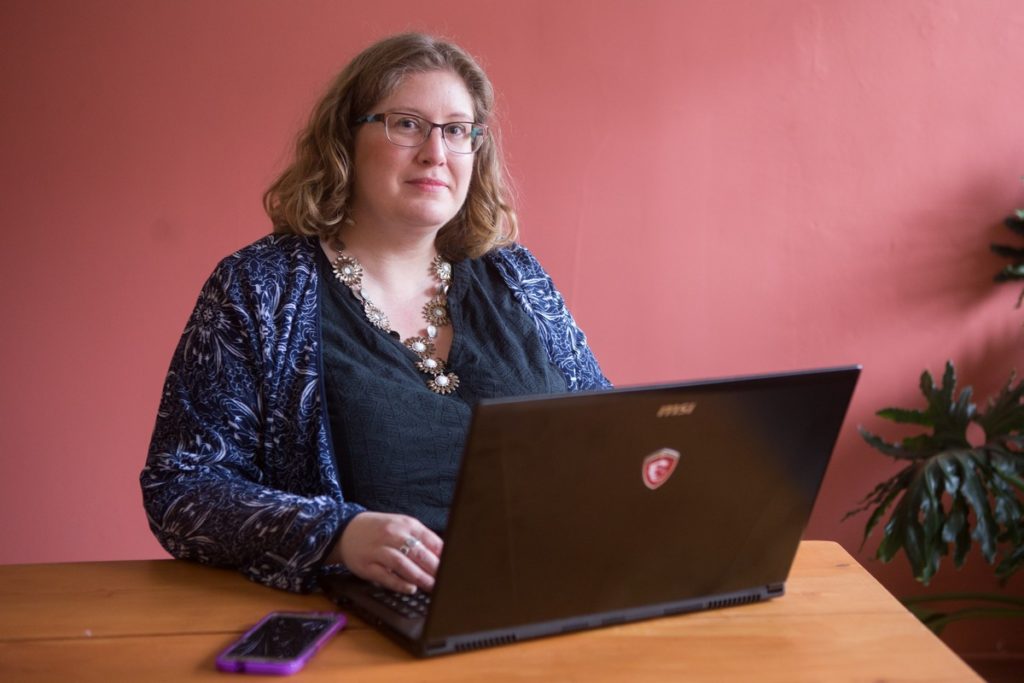
Let’s dig deep.
Every Monday, I send out my Body Liberation Guide, a thoughtful email jam-packed with resources for changing the way you see your own body and the bodies you see around you. And it’s free. Let’s change the world together.
Anne-Sophie: Amazing! And I’m sure that it is such a transformative experience for the client. I mean, I can only imagine how empowering, and at the same time, scary, it must be to do that.
What’s some of the feedback that you received from women who work with you?
Lindley Ashline: Well, when people come in, they are generally quite nervous partly because it is a very radical experience and partly because it’s just nerve-wracking a little bit for those people to take some of or all of their clothing in front of a camera. That’s very vulnerable.
But the thing is that it’s impossible to be nervous around me because I’m kind of a dufus. So you come in, and we’re laughing. And generally, I’m tripping over things. And I’m fighting with me light stand because we’re both trying to be at the same place at the same time, me and my lights. It’s impossible to be nervous.
So generally, the feedback that people give me, a lot of times, it’s very relieved because they’re like, “I was so nervous coming in, and you just make this such a relaxing or joyful or fun experience. I was nervous coming in, but then I just had a blast. I didn’t worry. And I knew that I felt safe. I knew that I would be taken care of in a way that also didn’t compromise my beliefs about bodies” or that “I knew I was ready to push myself and my beliefs about my own body. This helped me do that.”
Anne-Sophie: What is your favorite part of these sessions with clients?
Lindley Ashline: You know, I really enjoy the energy that people bring because I also do diverse in body positive stock photography and small business sessions and portraits. And every time I work with people, whether I have recruited them to come in as models, or it’s a client coming in, they bring in their own stories. And some of those stories are located in their bodies.
And so, I think my favorite part is those serving as a tool that people are using to get further along on their journey on how they feel in their own bodies—and other people’s bodies.
But also getting those stories is such a privilege. I photographed a woman last year in Salt Lake City who was an older woman who have had open heart surgery. And she had this three-inch long vertical scar on her chest between her breasts. She was very sensitive about it.
And as the session unfolded, she was able to get to a point of confidence where she was able to show that scar.
And that photograph… I actually have it for sale as a Fine Arts photograph. And it’s the lines of her bra and her skin, which has a lot of texture because she’s older, and this scar… and then the necklace she was wearing.
That scar was such an important part of her story. And it’s beautiful, not only because it’s part of the human body, and so it’s automatically worthy, and it’s beautiful because it exists, but it’s also such an important part of her story.
And as she relaxed, as she was able to open up and be vulnerable during this session, she also went from being so protective of that area that she didn’t want to uncover it at all, but to go from that to being willing to have it photographed but willing to share that story with me.
And I think getting those stories is such an honor that that might be the best part for me.
Anne-Sophie: I’m certain that it’s this working together. And your energy—and I can just feel it now just talking with you—that creates this opening for your clients, for these women, to just be so vulnerable and embrace their body in this session. That’s really, really amazing to witness but also just to hear about. Our fears and our shame around our bodies are so deep. And when we can even allow ourselves, even if it’s “just for a session,” to let go of that, I’m sure there’s deep healing going on.
Lindley Ashline: Yes, just having the space to do that—I’m not a therapist, I’m not a counselor, I’m not a coach, but there’s something about having the stories that are in your skin exposed to a camera that’s as intimate as telling the story… it really is. And being in a space where there’s somebody who clearly thinks that your story is worth telling because they want to record the way it has told itself on your body, I think it frees people to open up about the full story too.
Anne-Sophie: I love that! And we need more of that. We need so much more!
I’m curious though. You said you have never seen a fat photographer. Since you’ve begun to be more public, and since you’ve been doing this work, have you seen a difference? Or are you still the unicorn out there?
Lindley Ashline: As much as I love unicorns—the subscription box that I run, which is called the Body Love Box, has a unicorn as its logo. And I have a giant unicorn statue on the porch of my house. That’s how you know it’s me, if there’s a unicorn around.
Alas, I am not a photographer unicorn except in the sense that I’m the only one who is producing large volumes of fat positive stock photos. I’m currently the only one in that market.
But no… and this has been one of the wonderful, wonderful things about the Body Positivity movement. It has made fat acceptance palatable in a way that it has reached many, many, many more people. And there are so many body positive photographers now.
The organization, ALLGO, has a list of, I don’t know, I think a hundred body positive photographers on their site.
And so, no matter where you are in the US—I don’t know about outside of it unfortunately—no matter where you are in the US, there’s probably a body positive photographer of some kind who is close to you, in your closest city.
And it is wonderful to see that. Bring home the competition because the more photographers who are my competition, the better. I want to be one of many. I want to be just one person who is doing this work because everybody deserves to have access to it.
Anne-Sophie: One hundred percent, yes! I love your Instagram feed. And I’m all over it all the time.
Lindley Ashline: Thank you.
Anne-Sophie: There is so much that I could speak about. But one of the things really popped up for me was the post where you said you’re not fat because you’re broken. And I loved that message.
Can you share a little bit more about what you mean by that and what’s behind it?
Lindley Ashline: There is a cultural trope that I consider one of the most toxic that we have around bodies, partly because as someone who suffers from an anxiety disorder, this is something that has been used against me in the past, has been weaponized against me. And so I know how effective it can be if you’re the kind of personality that is highly affected by this.
And that concept is your body is the size it is because there’s something wrong with you, like in your head—and particularly against fat bodies.
And when I talk about this, I want to be clear that I’m not talking about eating disorders. That is a mental illness. That is something that absolutely affects your body size, and that’s not what I’m talking about here just to be clear. I’m talking about you’re fat because you need to heal.
Once you see it, you can’t unsee it. It comes in in dozens of different contexts. It’s in every diet where, “Oh, if you just fix yourself, the weight would just melt away.” And it’s usually phrases like, “Oh, that unnecessary weight will just fall away.” There’s always this sense of shedding something.
And the thing is it’s a nice thought. It’s very appealing from an aesthetic standpoint to think that, “Oh, if I just get in touch with my higher power… if I just heal from my mental illness… if I just get over my trauma… if I whatever…” there are thousand stories that we could tell, but of them are scientifically backed, not a single one. We don’t have a way to make fat people thin in the long term. We just don’t that is reliable for more than about 5% of the population.
And so this “you’re fat because you’re broken, because there’s something wrong with you,” it’s toxic on so many levels because, not only are we telling fat people that if they just got better, they’d be thin, we’re telling thin people that there’s something inherently broken about fat people, how destructive is that?
I’ve had a close relative that I love very much who is—if you ever listen to this podcast, sorry, not sorry—she sat me down a few years ago and gave me this absolutely devastating “come to Jesus” talk about, “Lindley, I think if you just heal from your anxiety disorder that that unnecessary weight would just go away.”
And again, I’ve talked extensively about my journey how it wasn’t that hard. But having somebody that I trusted who has been very familiar with my work still think that I’m fat because I’m broken, that was just devastating. I’m still mad at her. And it was years ago.
And so, that’s something that I could probably stand to resolve by having a talk with that person. And I haven’t done it for my own reasons.
But that “you’re fat because you’re broken” is just so toxic. And I get really salty about it when I see that being used against fat people or used to sell diets that aren’t going to work. And so that’s why I talk about it a lot.
Anne-Sophie: Good!
Lindley Ashline: Because I’m mad about it.
Anne-Sophie: And you should be, as well all should be. I would say it’s horrific. It really is. It’s sad that it’s still around. But we’re doing our part.
So, I’m really curious to hear what one message is that you wish you had gotten when you were a teenager and your body started to change, or when you realized that, “Hey, my body is not wrong”?
Lindley Ashline: You know, I think it would actually be that you’re not broken. There’s nothing wrong with you.
Because I do a lot of major photography, I spend a lot of times looking at trees and thinking about trees. I’m looking at trees outside my window right now in the Seattle rain. And we talked about this. Nobody looks at a tree and says, “Oh, you’re this huge oak tree. Why are you not a tiny, little maple? Why are you not a bonsai because, really, the bonsais are the sexiest ones. We should all aspire to be a bonsai.” Nobody says that. That’s not a thing.
Now, that I’ve said that, this is going to appear on the internet in another way.
New at Body Liberation Stock
We don’t look at every single tree and think it’s bad or wrong or broken because it’s not a tiny, little maple in a bonsai pot.
Anne-Sophie: That is true.
Lindley Ashline: You’re a tree! But humans come in as many humans are on this planet. That’s many how many variations there are. And just because we look at an extremely small subset (that have also been Photoshopped, so they don’t even look like themselves, I have to note), just because we look at this extremely small subset of people and say, “These are the good ones,” it doesn’t mean that humans are going to stop coming in all the varieties that they come in.
So, just because we only value one kind, just because we only value bonsais, it doesn’t mean that there aren’t going to be oak trees anymore. Oak trees will continue to exist. And they will continue to be absolutely worthy the way they are. Just because they’re not bonsai doesn’t mean that they’re not amazing, amazing, natural creations.
And so the more we look at the natural world and all the variations, the more it’s easy to see the human variations are absolutely okay.
I’m actually tearing up a little bit as I talk about this because it’s so important. The next time you feel like your body is fat and unlovable and unworthy, go to a park. Look at the six types of grass you’re going to encounter. Look at the trees, look at the bushes, and go—yeah, okay, people are mad at the crabgrass probably. But even if you’re a crabgrass, even if that’s how you feel today—
Like here in Seattle, we have horribly invasive blackberry canes. They’re Himalayan blackberries that are an invasive species. And they take over yards, and they take over highways, highway shoulders. And they’re thorny and prickly and a nuisance.
Even if that’s how you’re feeling today, you know those blackberries, they grow amazing fruits! The fruit is delicious. It’s huge and luscious. And it bursts in your mouth. And they have beautiful green leaves, like these gorgeous, glossy green leaves. Those blackberries aren’t worthless. They aren’t without value. They have a role in the ecosystem, in their proper ecosystem, to be fair.
So, it’s not a perfect analogy. But they have a role in the natural world just like you do. And just because somebody is telling you that, “Why aren’t you a bonsai?” it doesn’t mean that you don’t have worth and value in the natural ecosystem as you are. So that’s my message.
Anne-Sophie: I love the message. It’s perfect. And it is so true. We’re all different kinds of trees or whatever, whatever we find in nature.
Lindley Ashline: Yes, whatever part of the ecosystem works for you.
Anne-Sophie: Exactly! So, I am pretty sure that everyone wants to read more about you, connect with you, see you in your work. Where can people find you?
Lindley Ashline: You can find me at BodyLiberationPhotos.com. That is my central presence. You can get all my other work from there. And so that has information on my photography, on my consulting work, on the Body Love Box, which you can also get to at TheBodyLoveBox.com. That’s my monthly body positive subscription box.
And if you want to follow me on Instagram, which is where I do a lot of talking about your body is not broken, and we’re all trees, if you want to hear the radical stuff, Instagram is the place to go. And my Instagram handle is BodyLiberationwithLindley. And again, you can also get to that from my primary website at BodyLiberationPhotos.com.
Anne-Sophie: Love it! Go share. Follow. My son just came in. He just had a little breakdown, so if you hear him in the background, that’s it.
Again, I just want to thank you so much for doing this work, for showing the world, for opening so many eyes, I think, to what bodies look like.
Lindley Ashline: I hope so.
Anne-Sophie: I was going to say what real bodies look like—but not real or unreal, but what bodies look like and it’s amazing.
You’re an inspiration. And I hope we’ll be able to spread the word even further and to do more and more of this beautiful photography.
Lindley Ashline: Thank you very much. It’s been such a pleasure to be here.
Anne-Sophie: Thank you. It was really fun to have you.
Thank you for listening to The Escape Diet Prison Podcast. You’ve reached the end of another episode. Connect with us over at AnneSophie.us or in The Escape Diet Prison Facebook Group. See you at the next episode.
Hi! I’m Lindley.
I’m a photographer, author, cat mom, subscription box creator, and fat activist.
I help people reclaim their bodies through photography. I capture images of people of all sizes, ethnicities and genders, not just the ones whose bodies are likely to be seen in magazines and advertisements.
I also really enjoy putting together resources like this — so much that I do it every week!
Column 2
Hi there! I'm Lindley. I create artwork that celebrates the unique beauty of bodies that fall outside conventional "beauty" standards at Body Liberation Photography. I'm also the creator of Body Liberation Stock and the Body Love Shop, a curated central resource for body-friendly artwork and products. Find all my work here at bodyliberationphotos.com.

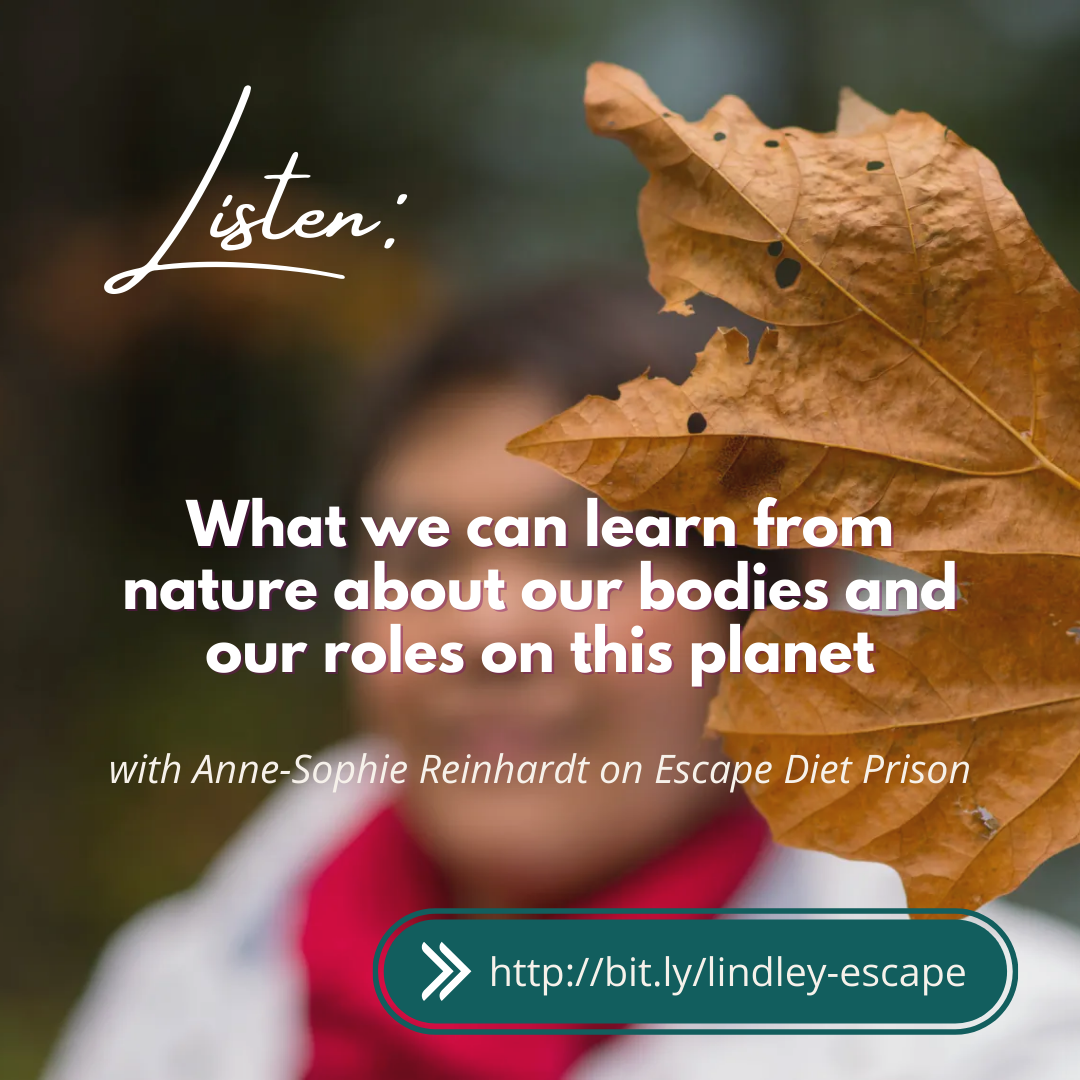
![Illustrated Art Stock: Plus Size Woman Covered with Flowers [Body Liberation Stock exclusive] - Body Liberation Photos & Stock](https://bodyliberationphotos.com/wp-content/uploads/2024/09/Illustrated-Art-Stock-Plus-Size-Woman-Covered-with-Flowers-Body-Liberation-Stock-exclusive-94337-600x600.jpg)
![Illustrated Art Stock: Plus Size Woman Twirls in a Skirt [Body Liberation Stock exclusive] - Body Liberation Photos & Stock](https://bodyliberationphotos.com/wp-content/uploads/2024/09/Illustrated-Art-Stock-Plus-Size-Woman-Twirls-in-a-Skirt-Body-Liberation-Stock-exclusive-94328-600x600.jpg)
![Illustrated Art Stock: Plus Size Woman Twirls in a Skirt [Body Liberation Stock exclusive] - Body Liberation Photos & Stock](https://bodyliberationphotos.com/wp-content/uploads/2024/09/Illustrated-Art-Stock-Plus-Size-Woman-Twirls-in-a-Skirt-Body-Liberation-Stock-exclusive-94323-600x600.jpg)
![Illustrated Art Stock: Plus Size Woman with Hands Over Breasts [Body Liberation Stock exclusive] - Body Liberation Photos & Stock](https://bodyliberationphotos.com/wp-content/uploads/2024/09/Illustrated-Art-Stock-Plus-Size-Woman-with-Hands-Over-Breasts-Body-Liberation-Stock-exclusive-94318-600x600.jpg)
![Illustrated Art Stock: Plus Size Woman with Hands Over Breasts [Body Liberation Stock exclusive] - Body Liberation Photos & Stock](https://bodyliberationphotos.com/wp-content/uploads/2024/09/Illustrated-Art-Stock-Plus-Size-Woman-with-Hands-Over-Breasts-Body-Liberation-Stock-exclusive-94313-600x600.jpg)
